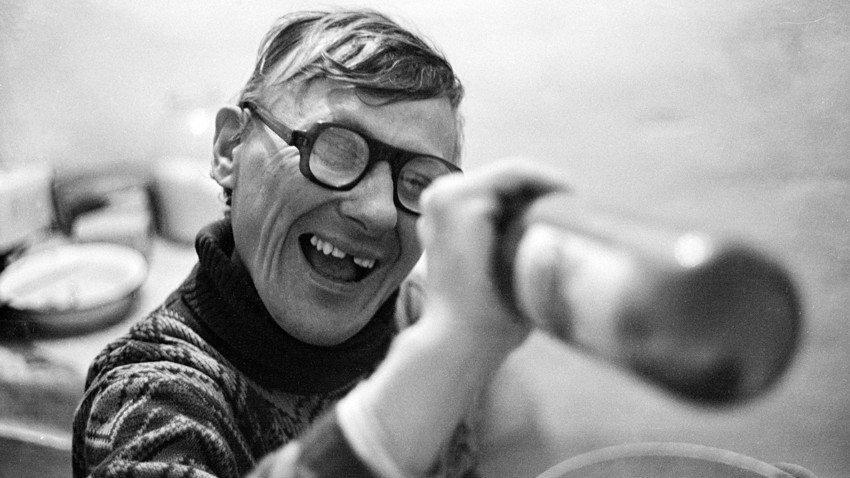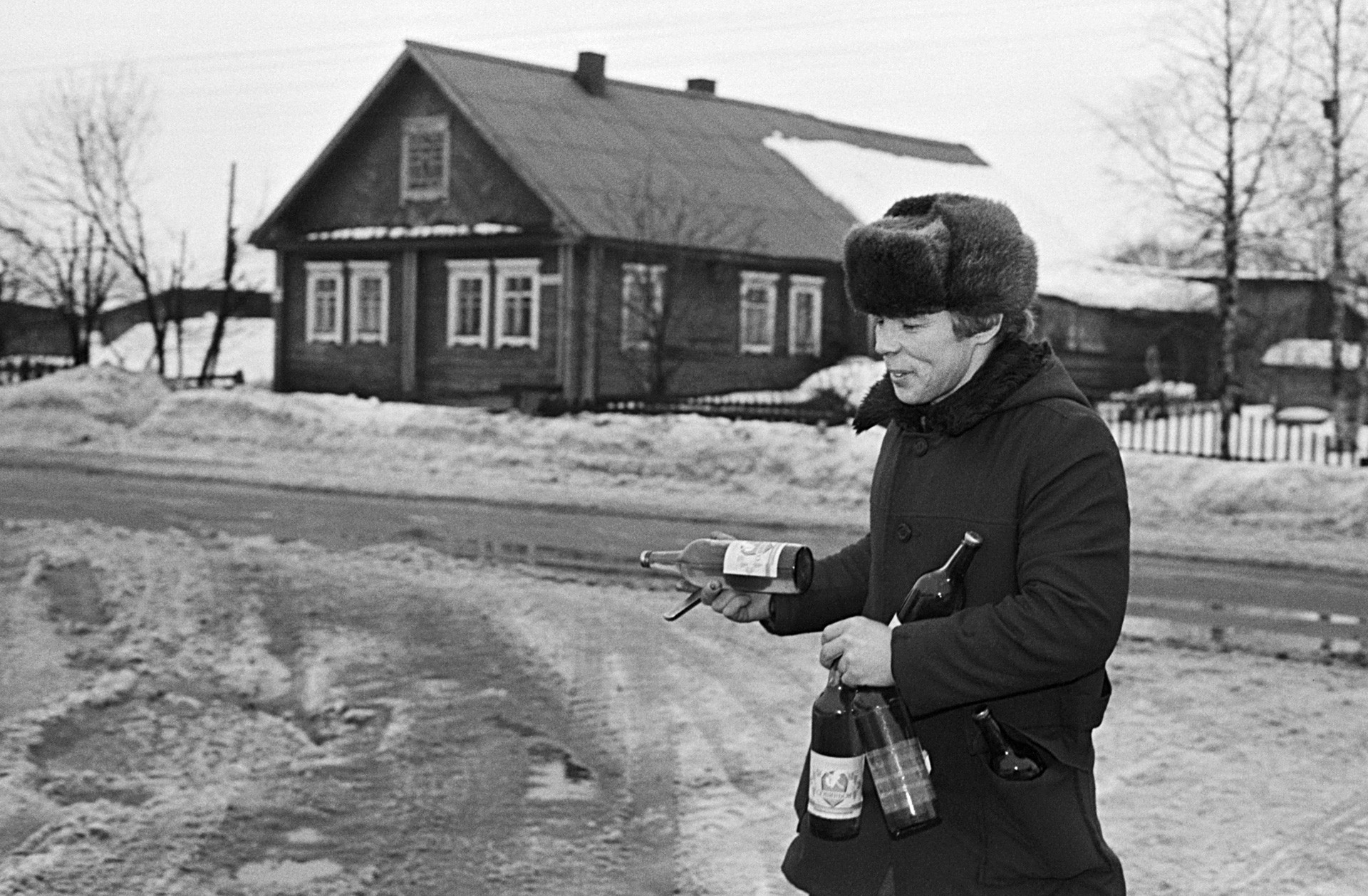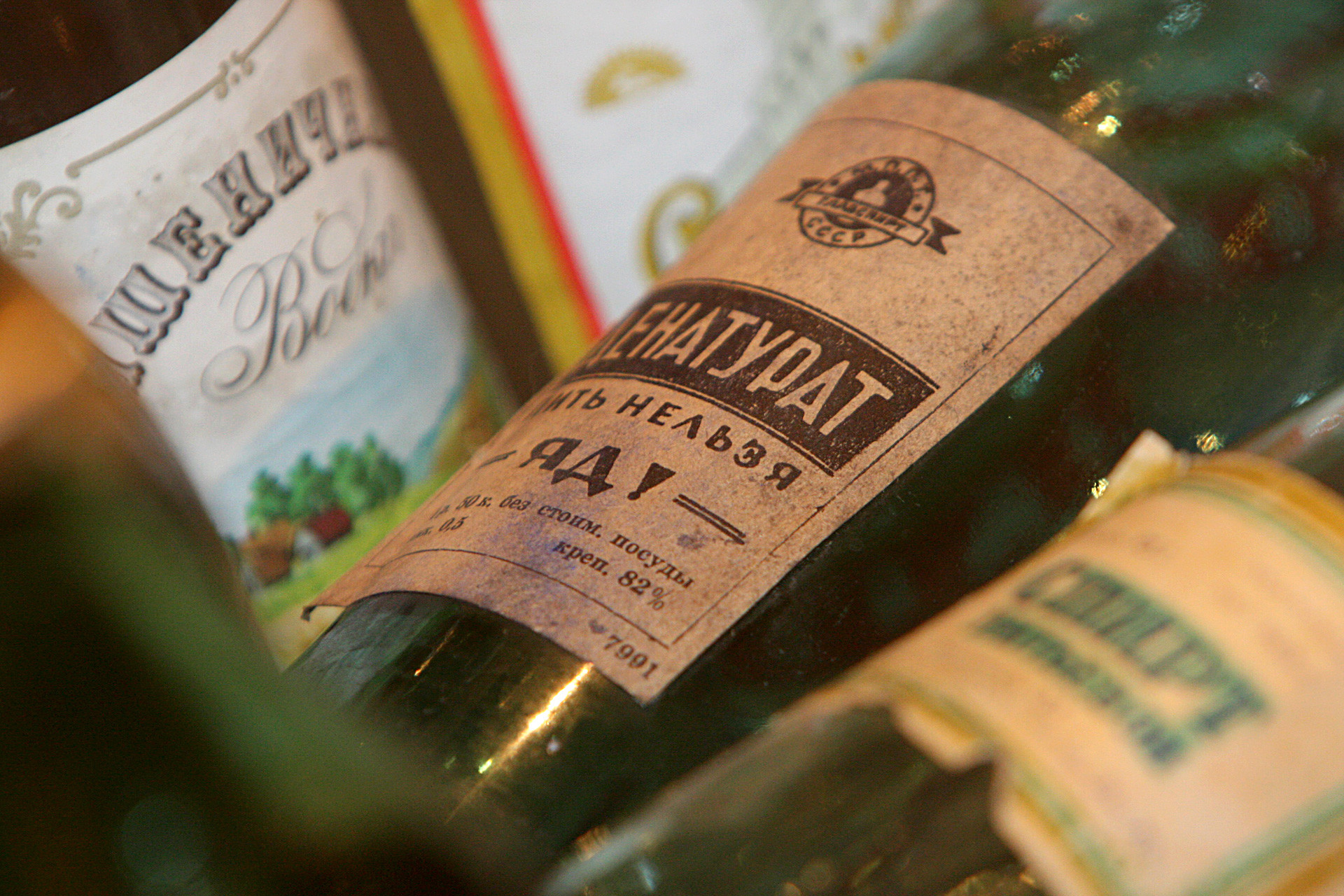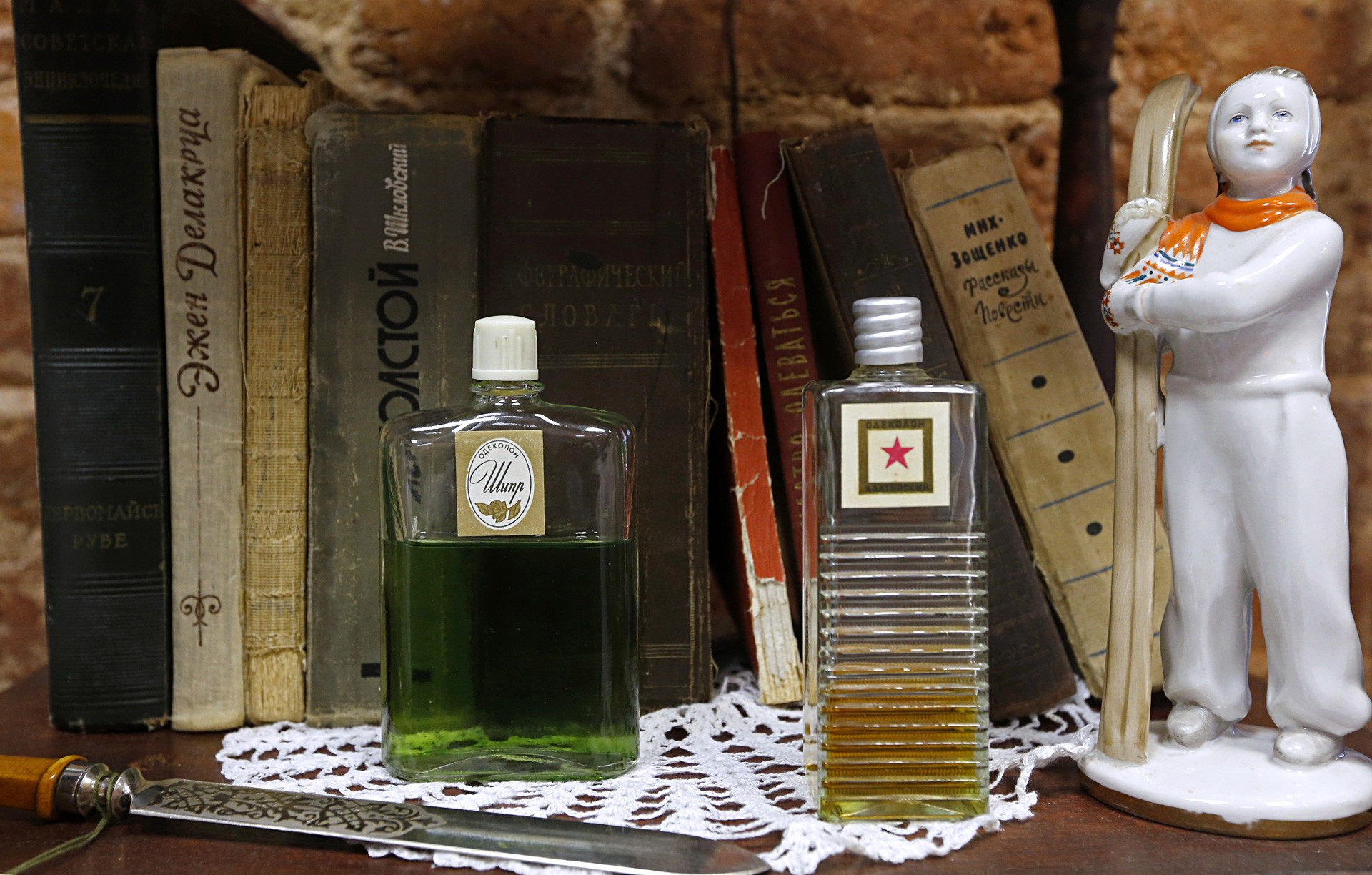
Man looking into a neck. 1986. Torzhok. Tver Region. USSR
Aleksandr Schemlyaev/Global Look PressRussian author Venedikt Yerofeev once described a drink in his hilarious poem in prose Moscow to the End of the Line (1970): “I present to you the cocktail ‘Bitches’ Brew,’ a beverage that overshadows all others.” It contained 100 g of beer and a few other ingredients: Shampoo, dandruff treatment, “BF” glue, and insecticide.
“After only two goblets of this cocktail, a person would become so inspired that it is possible to go up to him for half an hour, standing one and a half meters away, spitting in his fat face without him saying a thing,” Yerofeev wrote.
Taking into consideration the ironic style of the poem, it’s unclear whether the author ever sampled such a tipple but the recipe is not as far from reality as it sounds. At least, its ingredients were well-known by Soviet alcoholics.

A local holding bottles in a Soviet village, 1990.
Semyon Maisterman/TASSNormally, Soviet people didn’t drink anything like the above. They chose beer, Caucasian and Crimean wines, and of course, vodka. Those who preferred glue or eau de cologne were usually pariahs without the means to afford normal alcohol.
The general situation with alcoholism, however, was dire: By 1984, alcohol consumption reached, according to Doctor Alexander Nemtsov (an expert on alcoholic mortality) 14 liters of pure alcohol per capita a year. “Considering the fact that most drinkers were male, it means that one man drank around 180 bottles of vodka a year or around one bottle every two days.”
The authorities sounded the alarm as the country’s mortality rate was growing. In 1985, Mikhail Gorbachev (he led the USSR from 1985 to 1991) launched his anti-alcohol campaign. The state reduced production and raised prices, advocating sobriety everywhere. To a great

A bottle of technical (methylated) spirit. The sign says: "Don't drink, POISON!" Unfortunately, it didn't stop all the boozers.
Andrey Stenin/SputnikTechnically, the job of getting alcohol from such substances was hard. For instance, those trying to extract it from brake fluid “froze it out.” In winter, they took a hollow metal pole, left it in the cold for a night, and then poured brake fluid through it – believing that all the additives would freeze to the rail with only spirits left. This wasn’t an exact science.

Chypre eau de cologne. Quite a good perfume by Soviet standards but still a terrible thing to drink.
Alexandr Demyanchuk/SputnikIf “working” with “BF” glue, these “chemistry masters” had to separate spirits from the adhesive substance (resin) so they poured “BF” (known as “Boris Fedorovich”) into a bowl,
It comes as no surprise that these boozehounds were seriously damaging their health. Partial or total blindness caused by drinking industrial rectified spirit was not uncommon, not to mention diseases such as pancreatitis. Remember, it’s all about moderation. Especially in drinking.
If you want to know about higher-qualified alcohol in Russia, read our guide on finest wine places in Moscow.
If using any of Russia Beyond's content, partly or in full, always provide an active hyperlink to the original material.
Subscribe
to our newsletter!
Get the week's best stories straight to your inbox